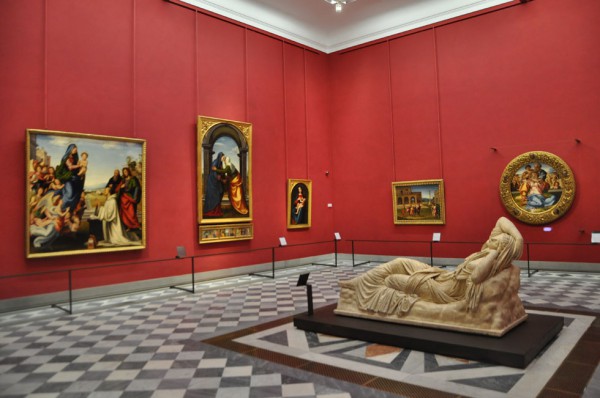Hall 35 – Michelangelo & the Florentines

Visiting this new hall (opened in January 2013), we can chart the course of art from the period called “High Renaissance” until its final evolution called “Mannerism”.
It’s no coincidence that the path of this ideal evolution starts in this room, where you’ll find an absolute masterpiece: the Tondo Doni or the Holy Family with the Infant and St. John the Baptist (c. 1506-1508) by Michelangelo. It’s the only painting by the great artist remaining in Florence, and certainly the only one that is attributed with certainty to the artist that can be moved (not painted directly on a wall).

This work influenced generations of artists because of the many novelties it presented. First of all, the “serpentine” (spiral pose) composition of the bodies of Mary, Joseph and the Child. Then the very bright, unnatural colors of the clothes, as well as the nudity of the figures in the background, clearly inspired by the Laocoon Group, the Hellenistic marble unearthed in Rome in the presence of Michelangelo himself.
The meaning of this masterpiece is almost certainly linked to some biblical passages about baptism as a symbol of Christianity in opposition to Paganism (hence the naked figures behind the Holy Family).

Michelangelo, Leonardo and Raphael were the inspiration of the artistic movement later called Mannerism, after the word “manner” (old Italian for “style”). Inspired by the style of these great artists, painters began to prefer bright colors and forced, unnatural positions, gradually and inexorably moving away from the terse rational simplicity of Renaissance painting.
The new hall also contains works by Andrea del Sarto, Franciabigio, Francesco Granacci, Fra Bartolomeo and Alonso Berruguete, to name just a few as well as the Sleeping Arianne in the center of the room, a Roman sculpture dating back to the second century A.C.









